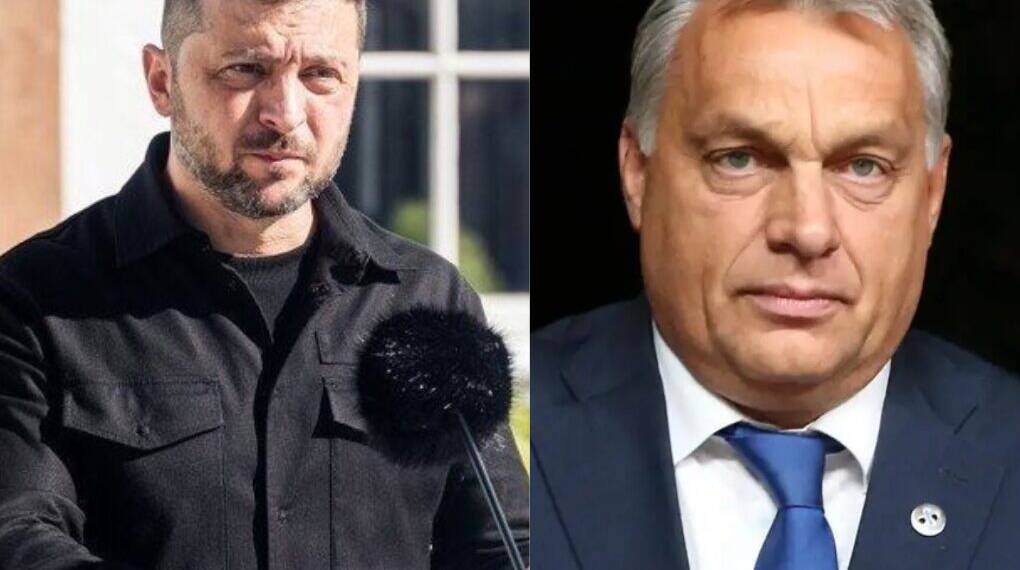On September 26, 2025, Ukrainian President Volodymyr Zelenskyy raised alarms over alleged airspace violations by reconnaissance drones, which he claimed were “likely Hungarian” and possibly conducting surveillance on Ukraine’s industrial sites near the border.
The accusation, made during a military briefing, has intensified already strained relations between Kyiv and Budapest, prompting sharp denials from Hungarian officials and raising questions about regional security dynamics.
Ukrainian Claims and Evidence
Zelenskyy announced that Ukrainian forces detected drone incursions over the Zakarpattia region, which borders Hungary. According to the Ukrainian General Staff, radar systems recorded a drone crossing the border twice on the morning of September 26, flying at varying altitudes.
The Ukrainian military deployed a Chaklun-KM reconnaissance UAV to patrol the airspace over Uzhhorod district in response. Preliminary assessments suggest the drones were scouting the industrial potential of Ukraine’s border areas, a claim Zelenskyy emphasized in his evening address, describing the incidents as “very strange events.”
He ordered a thorough investigation and instructed the military to respond appropriately if similar violations occur again, stating, “Ukrainians are currently the best in Europe at defending against any drones.”
The General Staff also released images on social media, purportedly showing the drones’ flight paths, which indicated crossings from Hungarian territory. However, Kyiv has not disclosed specific details about the drones’ profiles, the exact number of incursions, or whether attempts were made to intercept them.
Hungary’s Response
Hungary swiftly denied the allegations. The Hungarian Defense Ministry stated, “The Hungarian army neither carried out nor received orders for an alleged drone flight along the Hungarian Ukrainian border.” They noted that NATO’s Adaptive Hussars 2025 military exercise is ongoing in Hungary until mid-October and that both NATO allies and Ukraine are regularly briefed on these activities. The ministry also claimed no reports of such incidents were received from Ukraine, despite ongoing communication.
Hungarian Foreign Minister Péter Szijjártó responded with characteristic bluntness, accusing Zelenskyy of an “anti-Hungarian obsession” and claiming he was “starting to see things that don’t exist.” Szijjártó’s remarks, posted on social media, further escalated the rhetorical clash, with Ukraine’s Foreign Minister Andrii Sybiha retorting that Hungary’s government was displaying “hypocrisy and moral degradation” and acting as a “Kremlin lackey.”
Context of Strained Relations
The drone controversy comes amid deteriorating Ukrainian Hungarian relations, exacerbated by Hungary’s pro-Russia stance within the EU and NATO. Since Russia’s invasion of Ukraine in February 2022, Budapest has frequently clashed with Kyiv, blocking EU sanctions on Russia, delaying military aid, and opposing Ukraine’s EU accession.
Tensions have also flared over the treatment of ethnic Hungarians in Ukraine’s Transcarpathia region, with Hungary alleging rights violations and Kyiv accusing Budapest of meddling.
Recent tit-for-tat actions have further strained ties. On September 26, Ukraine banned three Hungarian military officials from entering its territory, retaliating against Hungary’s earlier expulsion of Ukrainian commander Robert Brovdi, an ethnic Hungarian, over alleged involvement in attacks on the Druzhba oil pipeline. Hungary’s Foreign Ministry criticized Ukraine’s actions, with Szijjártó sarcastically questioning Kyiv’s expectations for EU membership support.
Broader Implications
The drone incidents highlight growing concerns about airspace security along NATO’s eastern flank. Similar violations by Russian drones in Romania, Poland, and Estonia have prompted heightened alertness and discussions about a NATO “drone wall” to counter low-altitude unmanned systems.
Zelenskyy’s conversation with Danish Prime Minister Mette Frederiksen on the same day underscored the need for increased defense cooperation, with Ukraine sharing intelligence on the drone incidents.
Analysts are divided on the implications. Some suggest Hungary’s actions could be part of contingency planning or intelligence gathering in case of instability in Ukraine, while others view them as routine military exercises misinterpreted by Kyiv.
Earlier in 2025, Ukraine accused Hungary of operating a spy ring in Zakarpattia, a claim Budapest dismissed. These recurring allegations fuel suspicions of Hungary’s intentions, particularly given its warmer ties with Moscow compared to other NATO members.
Unanswered Questions
Key details remain unclear, including the drones’ origins, their exact purpose, and whether they were civilian or military. Hungary’s lack of technical counter-evidence and Ukraine’s limited disclosure leave room for speculation. The incident also raises questions about Hungary’s role in the broader geopolitical landscape, especially as Budapest navigates its delicate balance between NATO obligations and its economic ties with Russia.
As Zelenskyy pushes for a robust response to future incursions, the situation risks further escalating tensions in an already volatile region. With Ukraine’s military focused on countering Russian aggression, the added strain of border disputes with a NATO ally complicates Kyiv’s strategic priorities. For now, both sides appear entrenched, with diplomatic relations at a new low.








